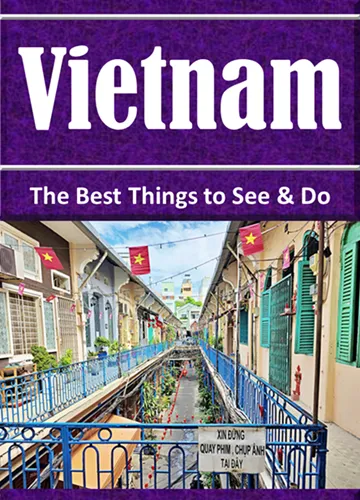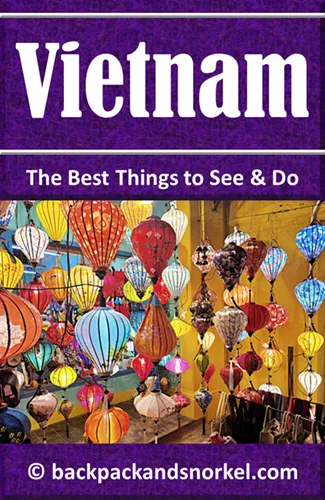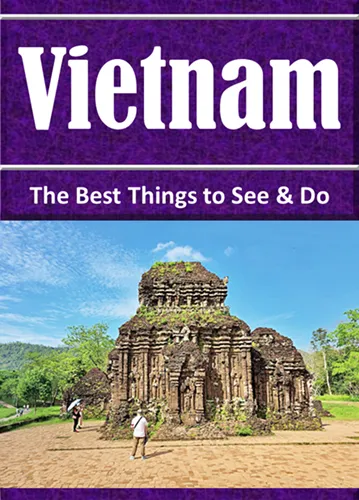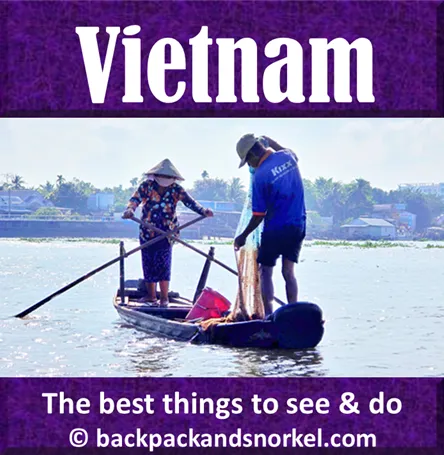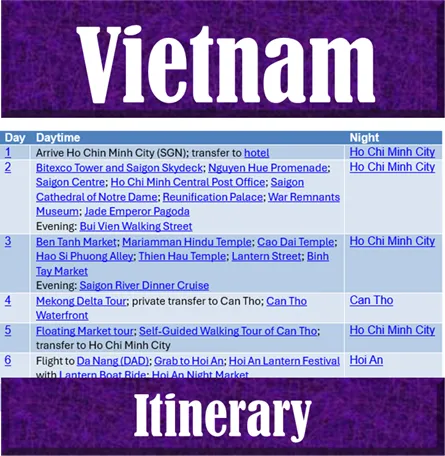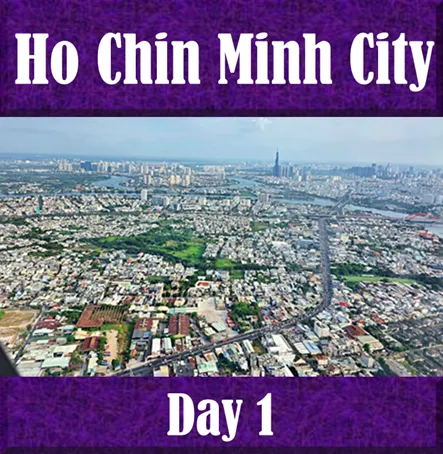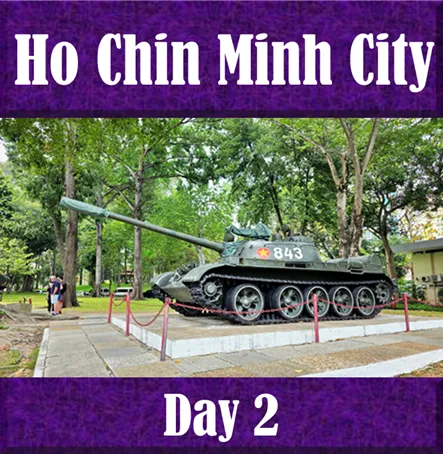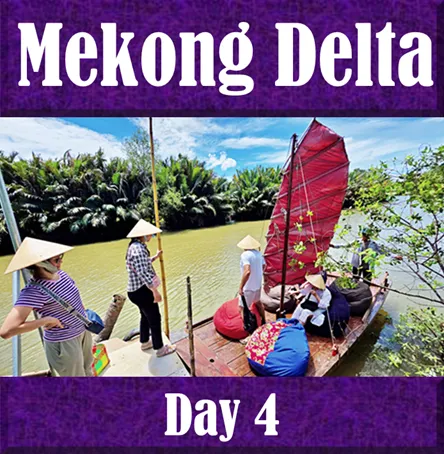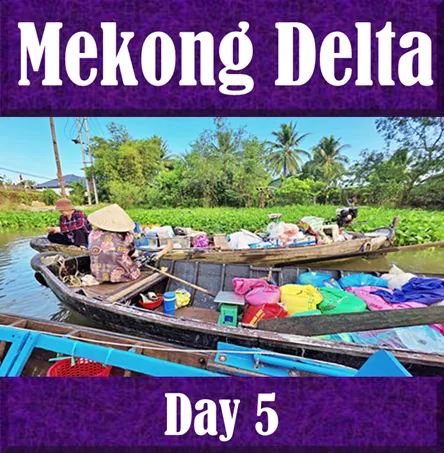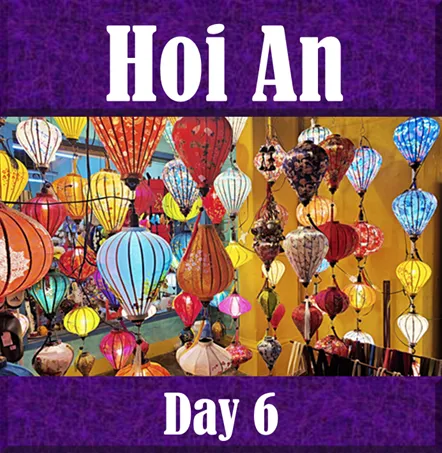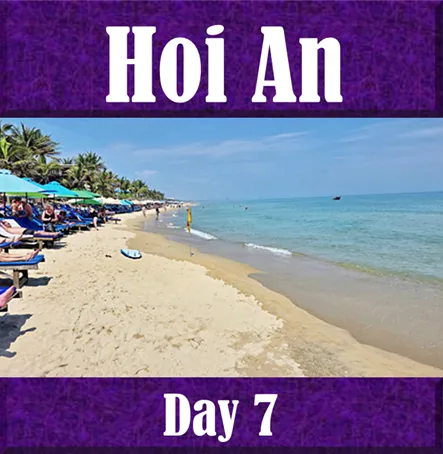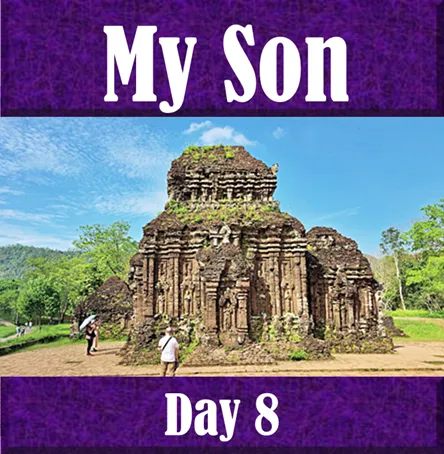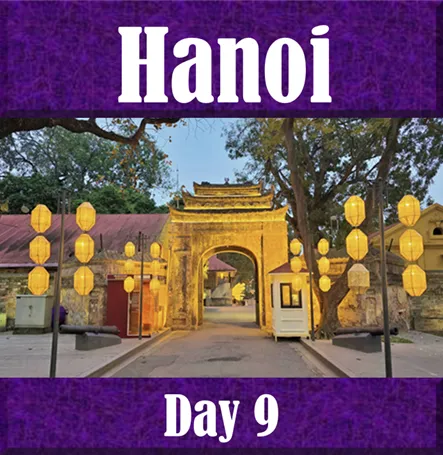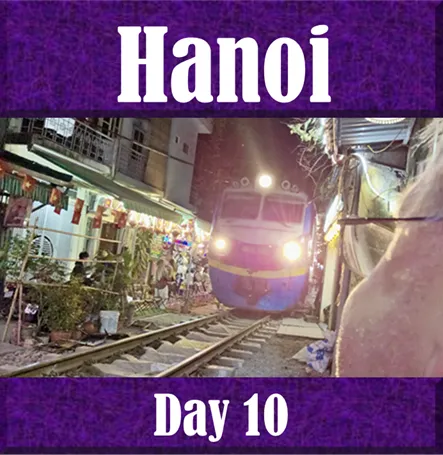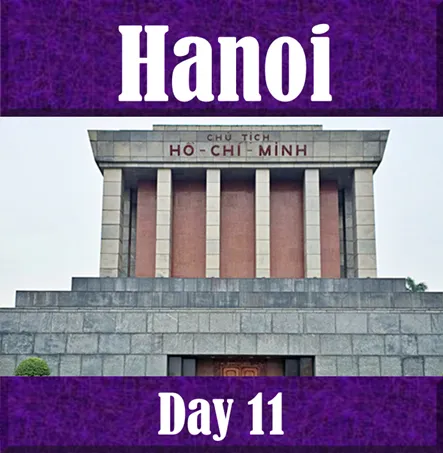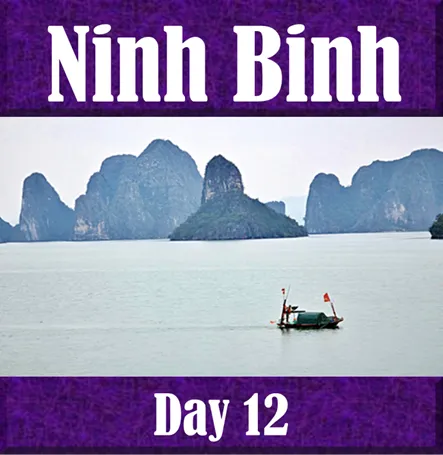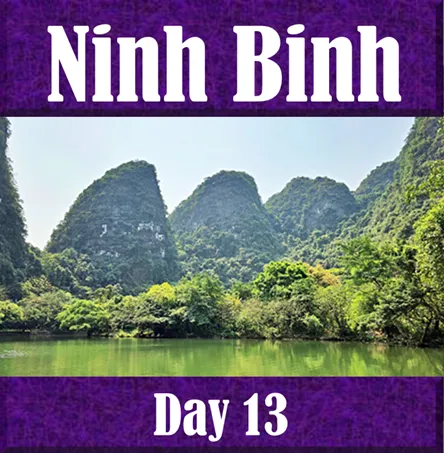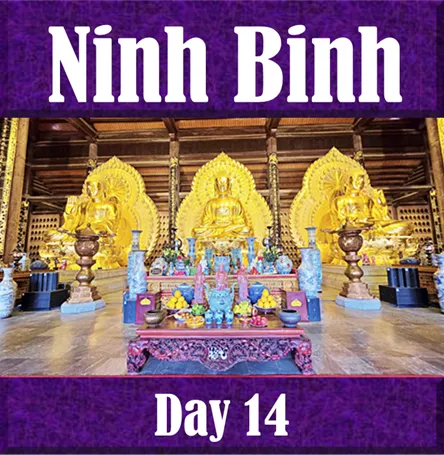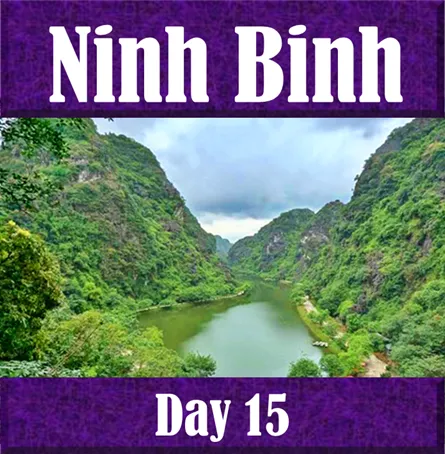Bai Dinh Pagoda: Guide to Vietnam's Largest Temple in Ninh Binh | Vietnam Purple Travel Guide
(map, reviews, website)
This is Premium Content! To access it, please download our
Backpack and Snorkel Purple Travel GuideOpening Hours: Daily, from 6am – 6pm
Admission: Bai Dinh Pagoda offers 3 tickets – choose wisely as you cannot upgrade later (prices at the time of writing):
100,000 VND per adult: includes admission and the electric shuttle ride from the visitor center to the site and back.
150,000 VND per adult: includes admission, the electric shuttle ride from the visitor center to the site and back, and admission to the pagoda.
300,000 VND per adult: includes admission, the electric shuttle ride from the visitor center to the site and back, admission to the pagoda, and all electric shuttle rides inside the complex. Be advised that visiting Bai Dinh Pagoda involves a lot of walking. If you do not want to walk long distances especially if it is hot, then this ticket can make a lot of sense.
The regular electric shuttle which is included in all three tickets operates between #2 and #7.
The pagoda that is included in the second ticket is #17.
The electric shuttle that operates inside the compound and is only included in the third ticket operates on this route: #7->#12->#14->#13->#30->#17->#10->#37->#2->#7
Bái Đính Pagoda is the largest Buddhist temple complex in Vietnam and among the most impressive in Southeast Asia. Spanning over 1,700 acres (700 ha), it includes both ancient caves and a vast new temple complex built to accommodate increasing numbers of pilgrims and tourists.
Be advised that most travelers only explore the main site with the newer temples (#4 - #23 on the map). Some also explore the ancient temples (#24 - #29 on the map), and very few make it to the farther out Thung Ui (Ui Valley) site (# 46 - #54 on the map).
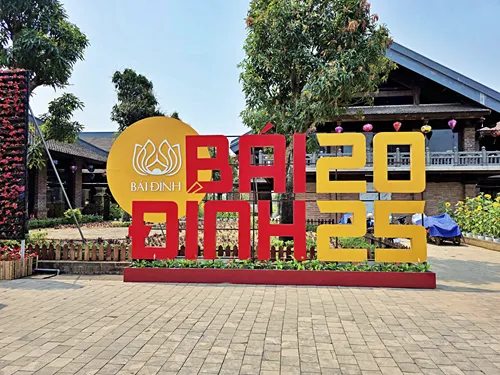
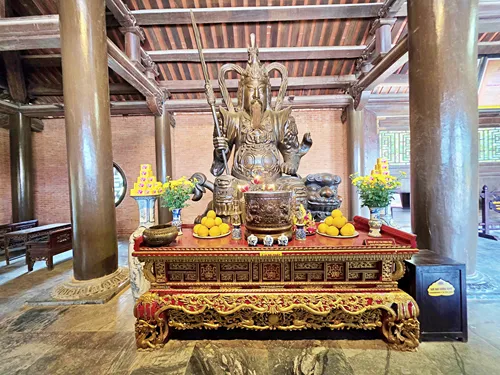
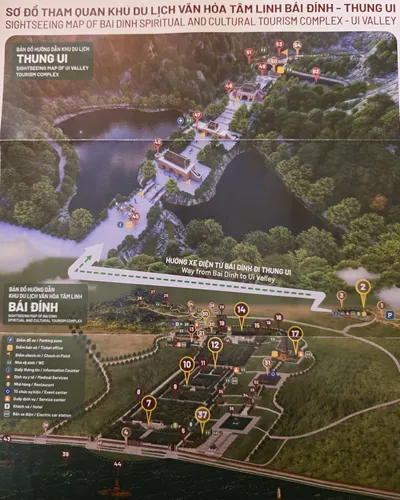
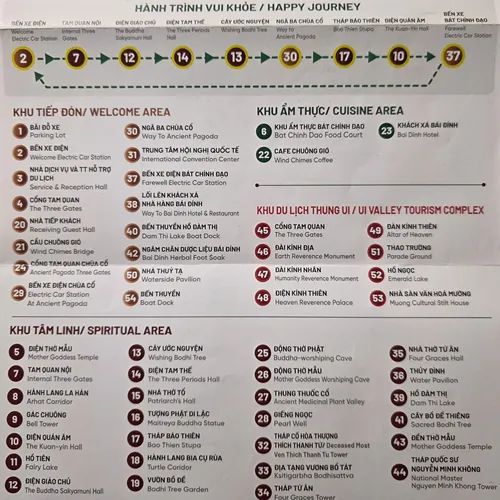
History of Bai Dinh Pagoda: A Blend of Ancient and Modern Worship
The original Bái Đính Pagoda, known today as the Ancient Pagoda, dates back over 1,000 years to the Dinh and Early Lê dynasties (10th–11th centuries). It was constructed on Mount Dính in a series of caves used by monks for meditation and worship. These older structures still exist and are considered sacred for their historical and spiritual importance.
The new Bái Đính Pagoda complex was constructed beginning in 2003 and completed in stages over the following decade. This massive development was part of a state-supported effort to revitalize Buddhism and promote spiritual tourism. It blends traditional Vietnamese architecture with ambitious scale and detail, resulting in a truly monumental temple site.
Today, Bái Đính attracts millions of pilgrims and visitors each year, especially during Tet (Lunar New Year) and the Bái Đính Festival in the first lunar month.
Why You Should Visit Bai Dinh Pagoda
Bái Đính Pagoda is a one of the highlights for travelers interested in Vietnamese religion, culture, and architecture.
Among others, you will see:
The longest corridor of Arhat statues (artistic representations of enlightened people) in Asia
Vietnam’s largest bronze Buddha statue
Majestic pagodas, shrines, towers, and prayer halls
Beautiful panoramic views of karst landscapes and rice paddies
The complex’s scale and serenity make it a spiritual and architectural marvel—whether you are Buddhist or not.
What to See in the Modern Bái Đính Complex
Here at Backpack and Snorkel Travel Guides, we promote self-guided walking tours.
But we realize that not everybody likes to walk by themselves in a foreign city. So, just in case that you rather go with ab guide: NO PROBLEM! Please see the GuruWalk and Viator tours below.
free GuruWalk tours
paid Viator tours
Tam Quan Gate (Three-Entrance Gate) #7
The monumental Tam Quan Gate marks the spiritual threshold of the Bái Đính Pagoda complex. ‘Tam Quan’ refers to the three passageways symbolizing the Three Liberations (or Three Gates of Liberation) in Buddhism: emptiness, formlessness, and non-action. Built in traditional Vietnamese style with intricately carved wooden beams and tiled roofs, this gate sets the tone for your pilgrimage. The central arch is for monks and honored guests, while the flanking arches are for laypeople. It is flanked by statues of guardian deities that ward off evil spirits.
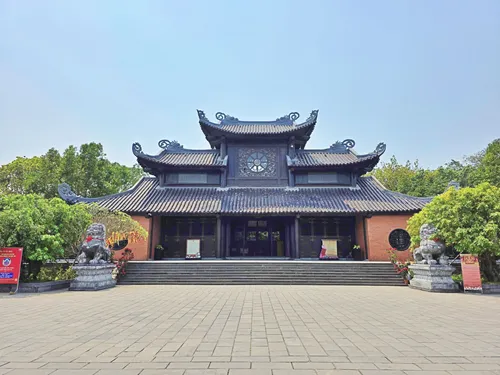
Emptiness (Śūnyatā)
Meaning: This refers to the understanding that all phenomena are ‘empty’ of inherent, independent existence or a fixed, substantial self (svabhava). Nothing exists in isolation; everything arises in dependence on other factors (dependent origination).
Implications: This does not mean things don't exist at all, but rather that they lack an unchanging essence or a solid, separate identity. For example, a chair is not inherently a ‘chair’ but is a collection of wood, nails, design, and our mental labeling. This insight undermines our tendency to cling to phenomena, including our sense of self, as solid and permanent.
Practice: Meditating on emptiness involves recognizing the interconnectedness and impermanence of all things, seeing that there is no fixed ‘I’ or ‘mine’ that can be clung to.Signlessness (Animitta)
Meaning: This refers to the absence of ‘signs’ or distinguishing characteristics that we typically grasp onto and create mental fabrications around. It means seeing phenomena without imposing our conceptual ideas, labels, and projections onto them. Our minds tend to create ‘signs’ (e.g., ‘beautiful’, ‘ugly’, ‘good’, ‘bad’) that then lead to attachment or aversion.
Implications: When we realize signlessness, we are no longer deceived by appearances or attached to the forms and qualities of things. We see beyond the temporary, conceptual constructions of the mind.
Practice: This involves letting go of mental fabrication, judgment, and the tendency to categorize and solidify experiences. It is about perceiving things as they are, without the overlay of our habitual thought patterns and emotional reactions.Aimlessness/Wishlessness (Apraṇihita)
Meaning: This means having no specific goal, aim, or object of pursuit, particularly in relation to worldly attachments or even the idea of a future ‘enlightenment’ to be grasped. It is about letting go of desire, striving, and the constant need to achieve something.
Implications: When we are aimless or wishless in this sense, we realize that everything we need for liberation is already present in the here and now. There is no need to run, strive, or search for something outside of ourselves.
Practice: This involves cultivating contentment with the present moment, releasing the grip of craving and attachment to outcomes. It is about simply ‘being’ without an agenda, understanding that true liberation is not something to be attained in the future, but a realization of what is already.
Corridor of Arhats #8
This corridor stretches about 2 miles (3 km) (one of the longest Arhat corridors in Asia) and is lined with 500 life-sized Arhat statues, each carved from monolithic stone. Arhats are enlightened disciples of the Buddha, and every statue is unique in facial expression, pose, and detail. This hall symbolizes the path to enlightenment and serves as a meditation route for pilgrims. As you walk through the corridor, it is customary to stop and gently touch the hands or feet of certain statues believed to bring good luck, wisdom, or health.
Here are some photos that we took:
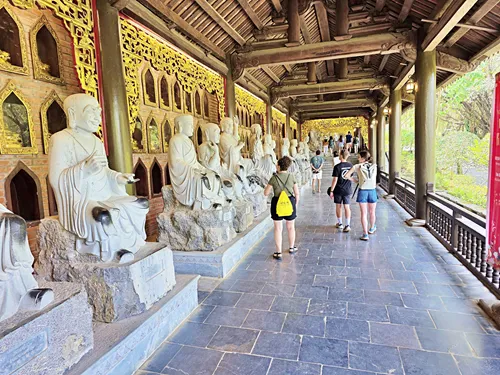
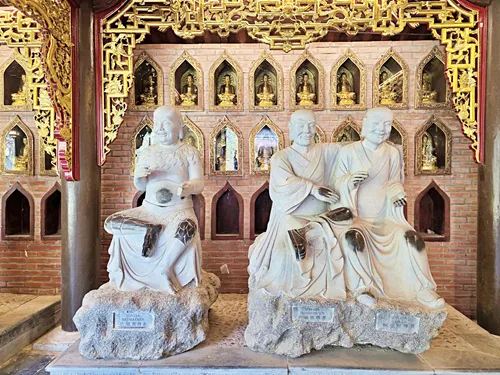
Bell Tower (Gác Chuông) #9
Known as Gác Chuông, this striking structure houses Vietnam’s heaviest bronze bell, weighing 36 tons. It is a multi-tiered pavilion built in traditional Vietnamese architecture, with curving tiled roofs and wooden interiors. Pilgrims may witness monks striking the bell during important ceremonies, filling the air with a resonant, meditative sound.
Symbolically, the bell represents the Buddha’s voice calling all sentient beings to awaken.
Here are some photos that we took:
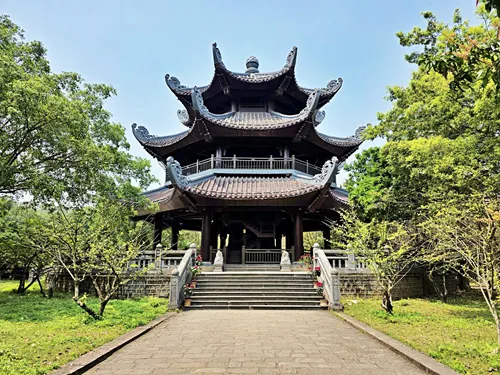
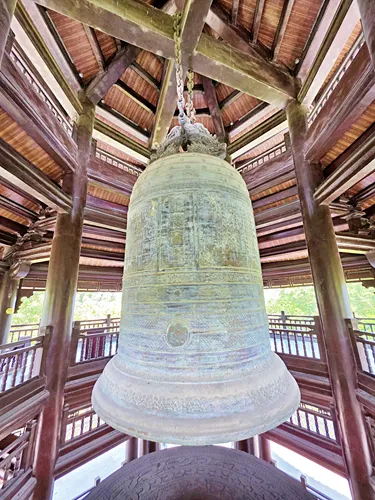
Diện Quan Âm (Kuan-yin Hall) #10
Dedicated to Avalokiteśvara Bodhisattva (Quan Âm), the Goddess of Compassion, this hall enshrines a large golden statue of the deity with thousands of arms and eyes — each representing omnipresent mercy and watchfulness. Quan Âm is one of the most venerated figures in Vietnamese Mahayana Buddhism, often prayed to for peace, health, and the resolution of suffering. The serene ambiance, combined with the scent of incense and chanting, makes this a tranquil and emotionally moving space for visitors and devotees alike.
Here are some photos that we took:
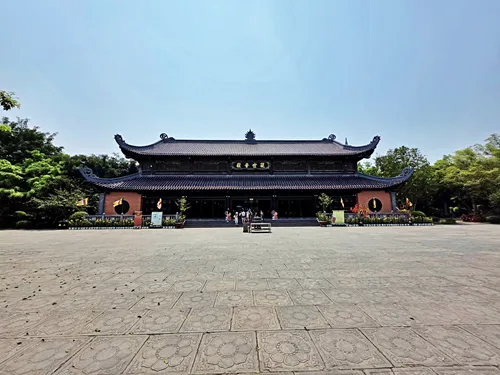
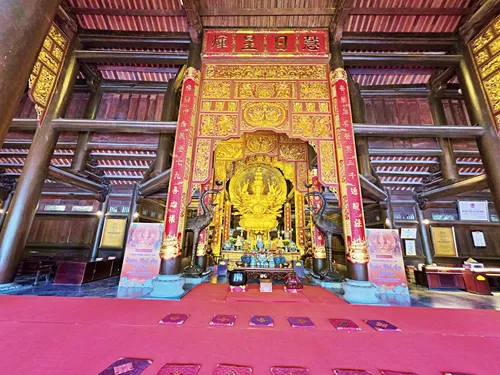
Pháp Chủ Hall – The Buddha Sakyamuni Hall (Diện Giáo Chủ) #12
This is the central sanctuary of the modern pagoda complex and houses Vietnam’s largest indoor bronze Buddha statue — a seated Shakyamuni Buddha measuring 33 ft (10 m) tall and weighing over 220,000 lbs (100 tons). Known locally as Diện Giáo Chủ, this hall is ornately decorated with lotus motifs, gold inlay, and wooden carvings. It is the main site for Buddhist ceremonies, prayers, and meditation sessions. The atmosphere is reverent and awe-inspiring, especially during major festivals like Vesak or Lunar New Year.
Here are some photos that we took:
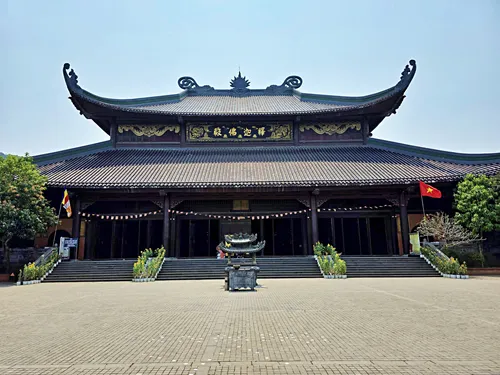
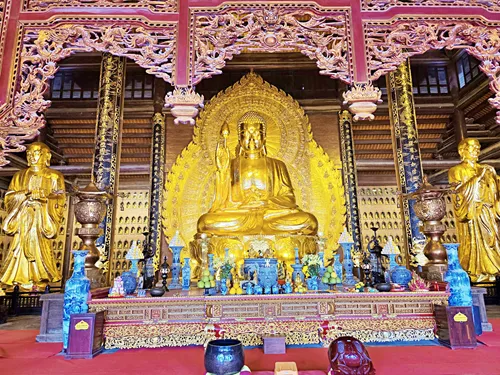
Café and Restaurant Area #22
Come here to eat lunch, or get some drinks or snacks. The site also has a nice vista point and Buddha states.
Here are some photos that we took:
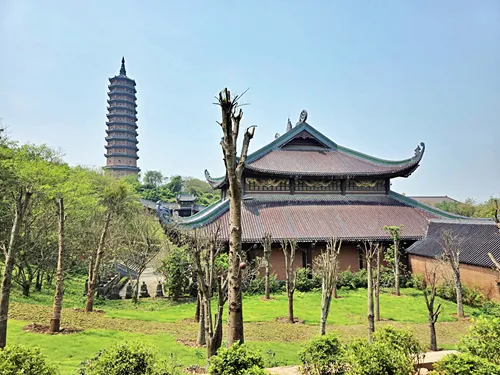
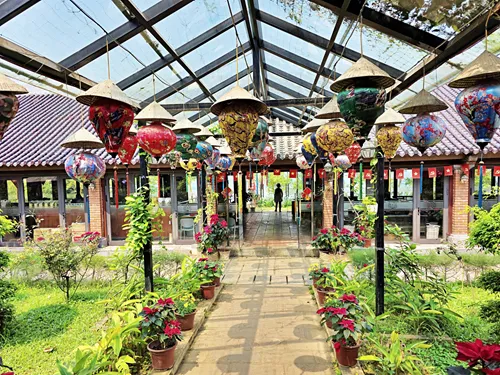
Diện Tam Thế (Three Periods Hall) #14
This massive hall enshrines three monumental Buddha statues, representing the past (Dipankara Buddha), present (Shakyamuni Buddha), and future (Maitreya Buddha). Each statue stands around 23.5 ft (7.2 m) tall and is cast in bronze, seated on lotus thrones, and surrounded by intricate mandalas. The hall's interior features massive wooden columns, lacquered murals, and a celestial ceiling. The Three Periods Hall represents the continuum of time in Buddhist cosmology and is one of the most architecturally impressive buildings in the complex.
Here are some photos that we took:
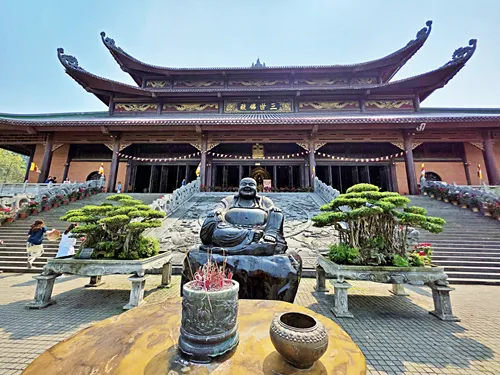
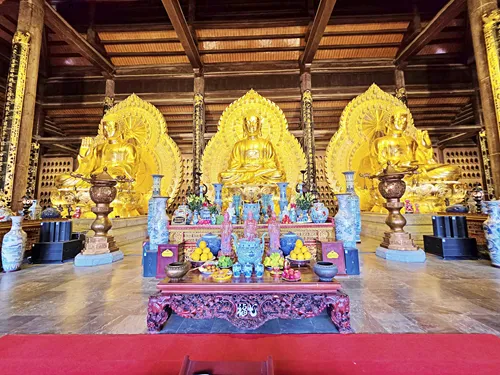
Tượng Phật Di Lặc (Maitreya Buddha Statue) #16
(map, reviews, website)
This is Premium Content! To access it, please download our
Backpack and Snorkel Purple Travel GuideLocated on a hill overlooking the complex, this enormous outdoor statue of Maitreya Buddha (Phật Di Lặc) is easily visible from afar. Maitreya is the Buddha of the Future, symbolizing joy, hope, and prosperity. The smiling, pot-bellied depiction is a favorite photo spot for visitors and a source of spiritual comfort. Its elevated position also provides panoramic views of the entire Bái Đính area.
Here are some photos that we took:
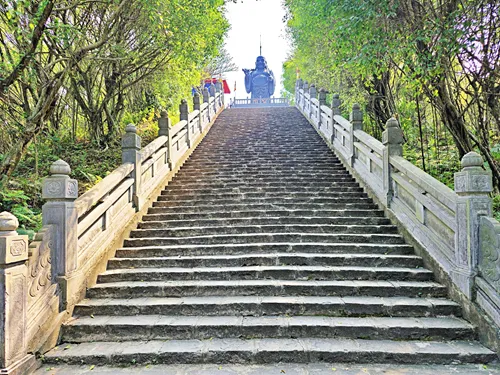
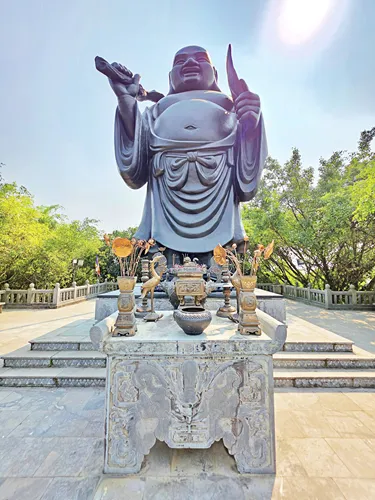
Tháp Bảo Thiên (Bái Đính Stupa) #17
This is the tower that you can see from almost anywhere in the compound. If you have the basic admission 100,000 VND ticket, then you can get to the tower and marvel at it, but are not allowed to enter it or climb up the stairs.
The Tháp Bảo Thiên is a 13-story octagonal tower standing at 100 meters, making it the tallest stupa in Southeast Asia. Completed in 2009, the stupa houses sacred relics of the Buddha, which were gifts from Sri Lanka, Myanmar, and India. Each floor contains Buddhist scriptures, statues, and altar spaces, with an elevator that takes visitors to the top for sweeping views of the surrounding karst terrain. The stupa’s design follows both Vietnamese and South Asian architectural motifs, emphasizing spiritual ascent and sacred geometry.
Here are some photos that we took:
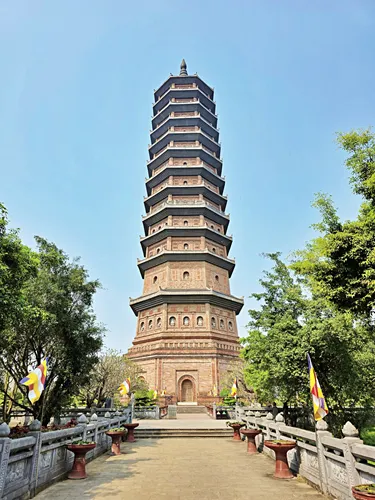
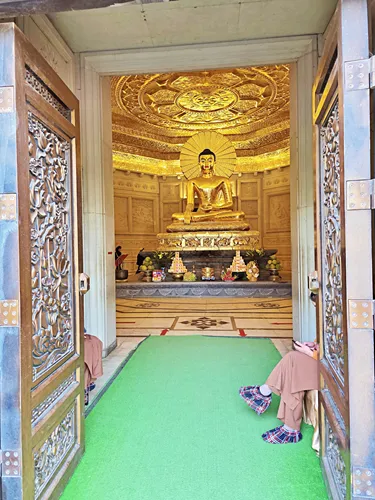
Cultural & Spiritual Significance
Bái Đính is a major center of Mahayana Buddhist worship, and a tourist attraction in Vietnam. It reflects the revival of Buddhism in the 21st century while honoring its thousand-year-old roots. Pilgrims come to pray for health, peace, family prosperity, and to honor Buddhist precepts.
Many also believe the site holds feng shui energy, positioned between sacred mountains and ancient water sources. The entire complex is carefully aligned for spiritual harmony, echoing traditional Vietnamese temple planning.
Travel Tips
Wear comfortable walking shoes - you will cover a lot of ground.
Dress respectfully, especially when entering prayer halls (cover shoulders and ideally knees).
Hydration: Bring lots of water, especially during warm seasons.
Where do you want to go now?
Author: Rudy at Backpack and Snorkel
Bio: Owner of Backpack and Snorkel Travel Guides. We create in-depth guides to help you plan unforgettable vacations around the world.
Other popular Purple Travel Guides you may be interested in:
Like this Backpack and Snorkel Purple Travel Guide? Pin these for later:

